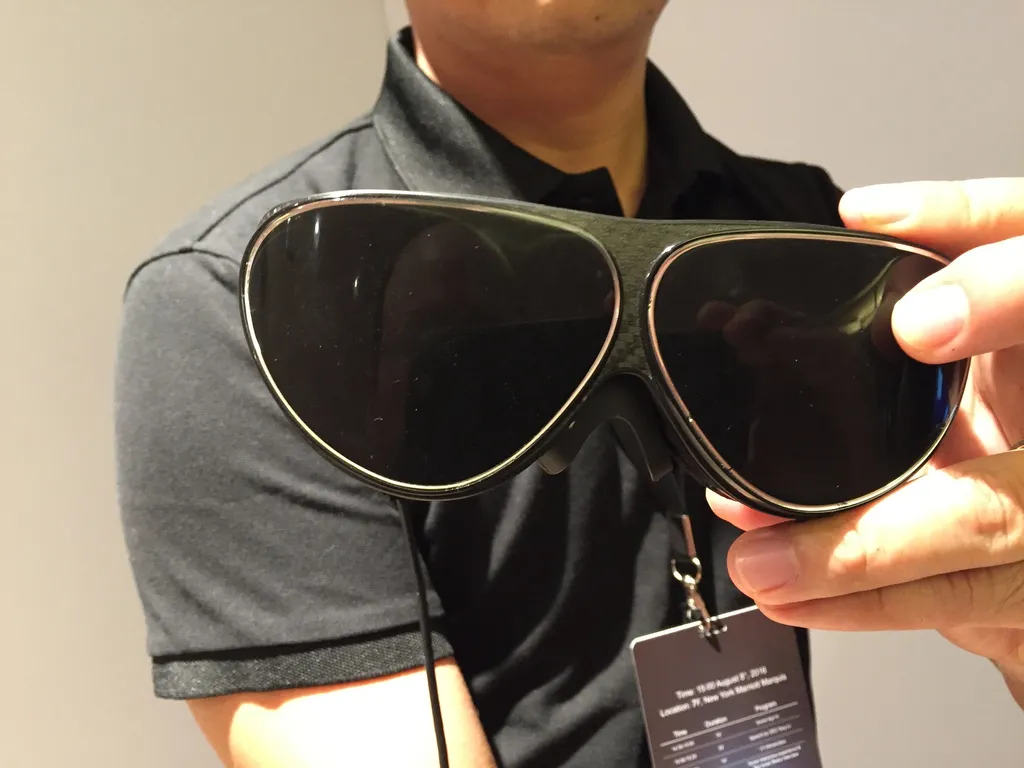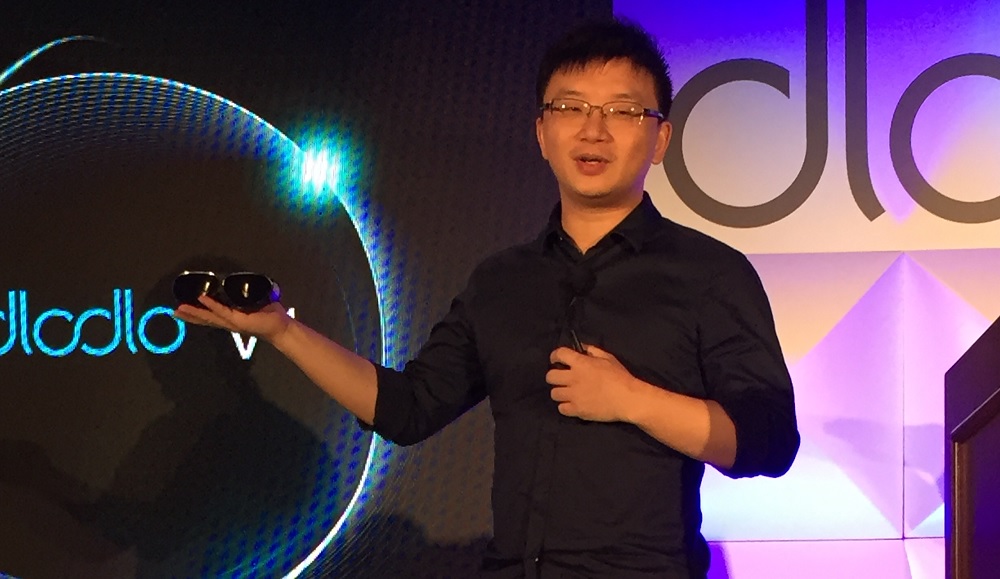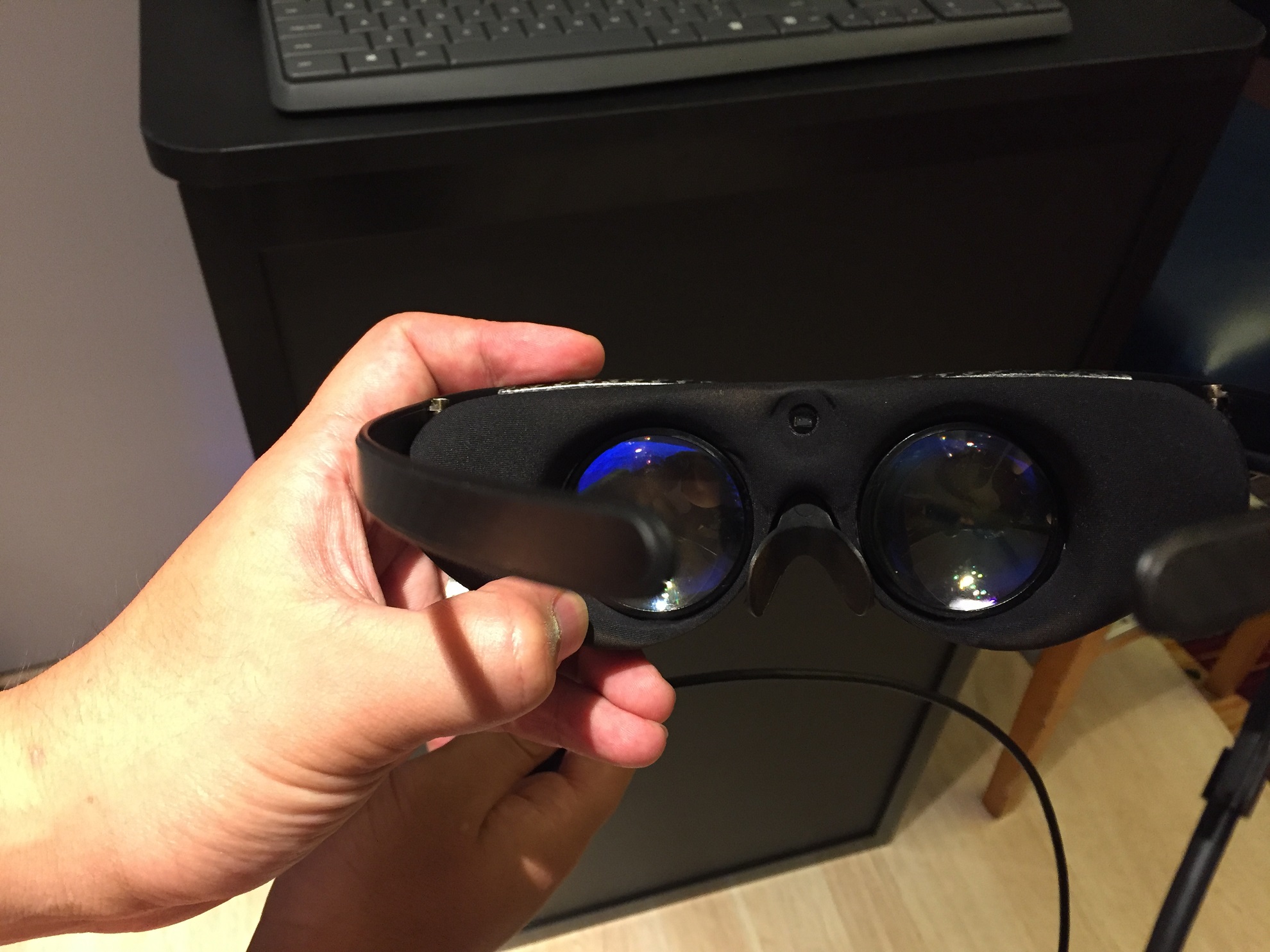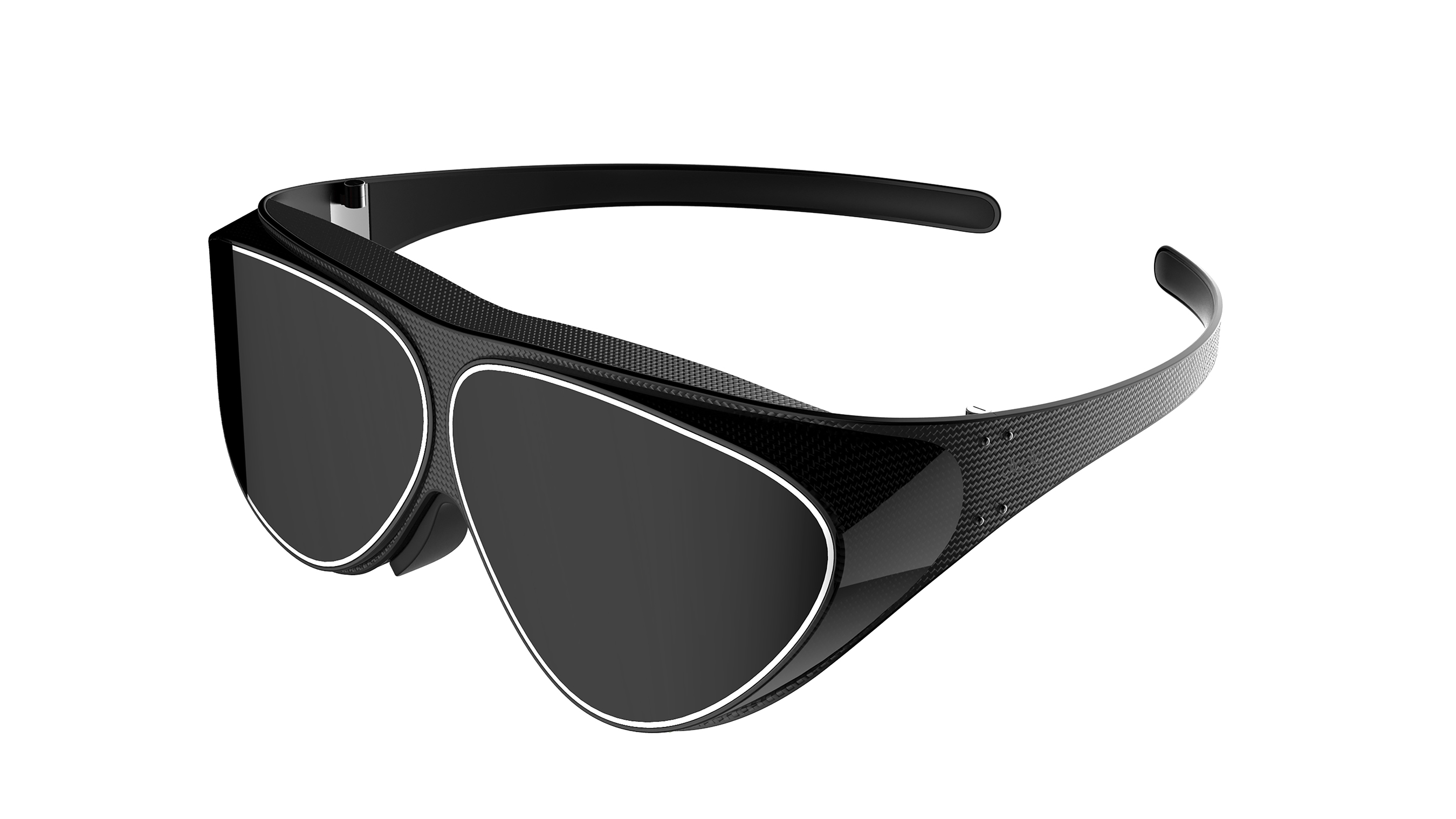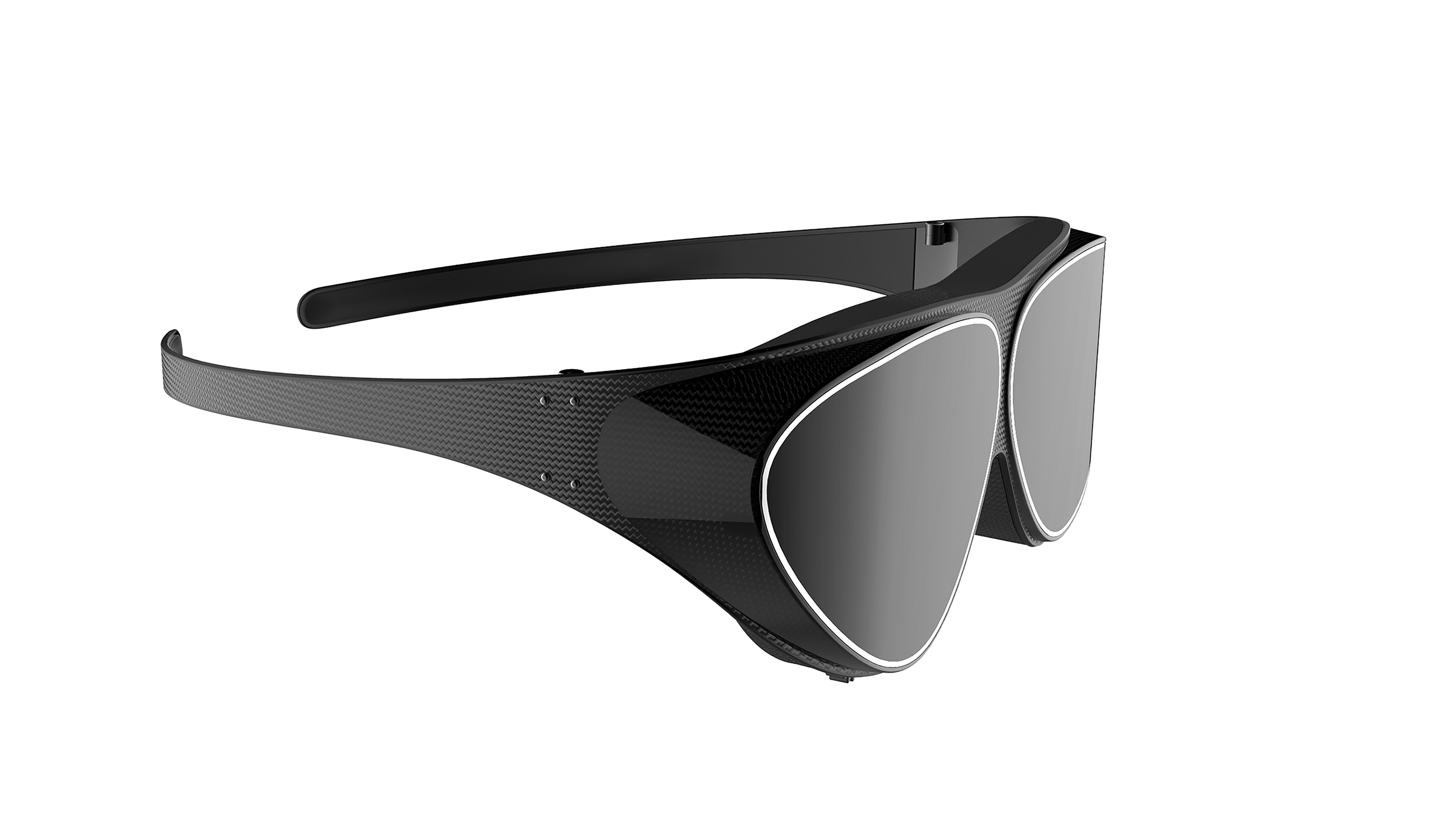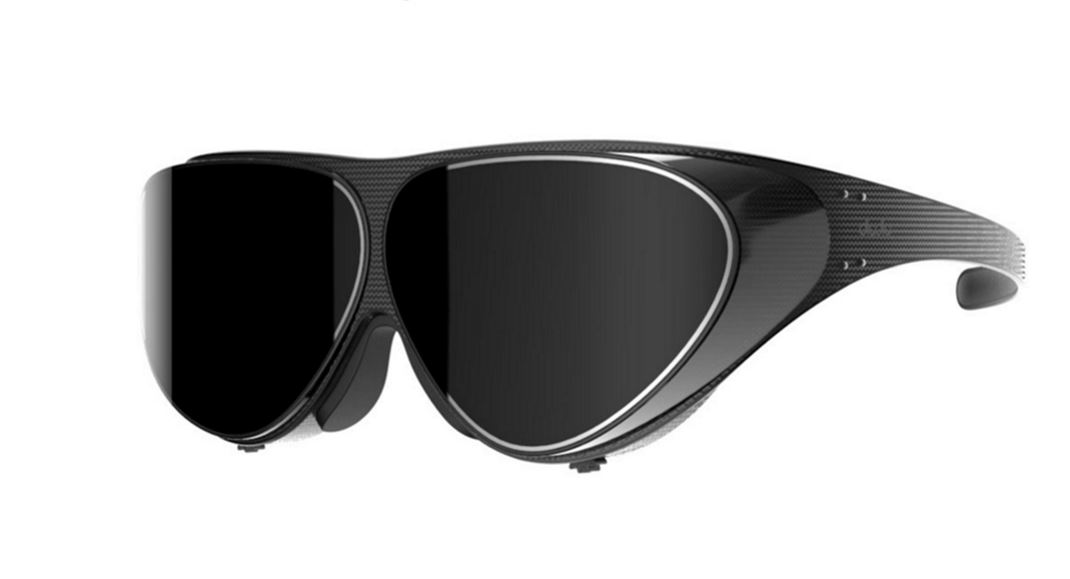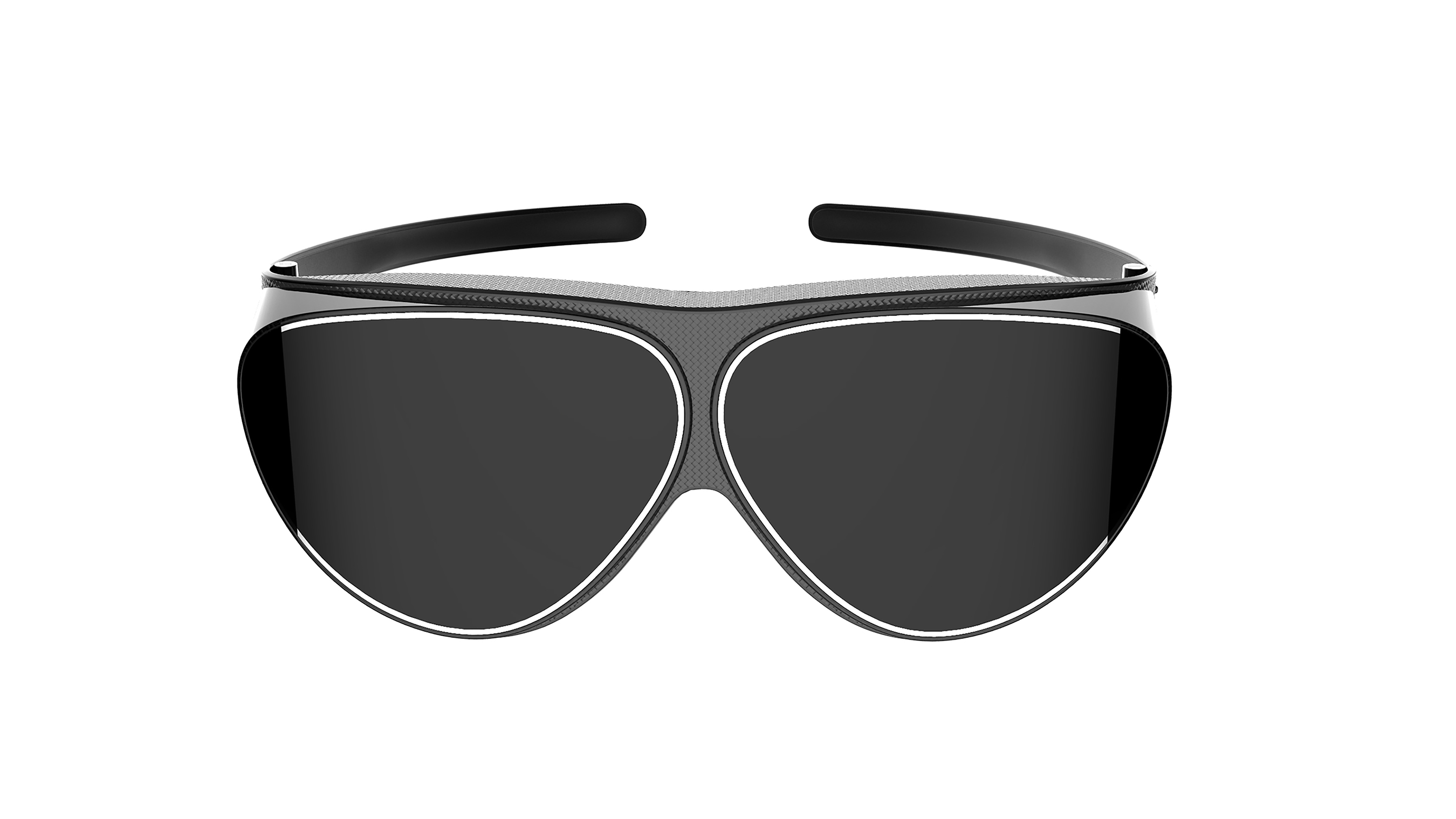Dlodlo unveiled its virtual reality glasses at an event in New York City recently. The Chinese company held a press conference in which the company’s CEO, Gang Li, showed off the VR specs and laid out the issues it addresses.
“Mark Zuckerberg has said the VR devices in sunglasses style is a must and will be the future trend and it will take Facebook five to ten years to realize this dream,” Li said via a translator, during the press event. “However, today, here, we can be proud to share everybody that we have made it.”
The Future of Fashion (and VR)
Pronounced with the Ls silent, the first “Do” syllable stretched, and the second one short, Dlodlo seems to be trying to leapfrog over other companies’ future efforts for a more streamlined VR experience. Unlike the box-on-the-face form of other VR company’s modern headsets, the Dlodlo V1 looks like a pair of oversized sunglasses. It is made of carbon fiber, weighing only 3.1 ounces — compared to the Gear VR’s roughly 16+ oz., the Rift’s 16+ oz., and the Vive’s 19+ oz. It is also only 0.63 inches thick, about the size of a penny, as the company stressed in its presentation.
And what about the tech specs of these specs? It is similar to other units: two 1200 by 1200 screens, for a total of 2400 by 1200 pixels, running at 90 frames per second. With the size of the screens being what they are, the image has 800+ PPI.
The company stated the V1 uses sensors and a predictive algorithm to limit vertigo. It also is listed as having a competitive FOV of 105 degrees. Each eye will have a dial to move the screen closer or further to the face, to aid those with imperfect vision. There is no external camera, so there is no positional tracking. But that means the headset works both with computers at your desk or phones on the go. It costs $559, and is planned for release in October via a Kickstarter project planned to launch in September.
https://www.youtube.com/watch?v=xF56ut8mIPM
“All of these common problems from VR devices: they are bulky, they are not easy to use, they are complicated,” said Li. “We think the best VR should be light and small, and easy to operate. It has to give you a comfortable feeling when you are wearing it. And most important of all, it should be fashionable.”
Part of Dlodlo’s plan is to not only offer the V1 headset, but also a D-1 portable computer that will work with it. Imagine something like an iPod Touch or an Android phone without the phone part. It will run on a custom OS built off of Android, have a 1.6 GHz quad-core processor and 2GBs of RAM. A 3000 mAh battery should provide up between two and three hours of video, according to the Dlodlo. The release schedule and the price of the D-1 portable computer was not announced.
The company did announce that content would be distributed through the Dlodlo VR store, rather than engaging in any sort of partnership to feature Cardboard apps, or content from Oculus or Valve. The Dlodlo store will showcase content like 360-degree videos and photos, as well as VR games. There was also mention of a potential future VR social network from Dlodlo.
“We are continuing work on this and we are hoping to build a complete VR ecosystem,” Li said. “This means we are going to build our VR social life. And in the near future, every one of us, will have one or more virtual reality identities. And we are going to live in this virtual reality world.”
The company is from Shenzhen, China. It was founded in March 2013. After years of research and prototyping, the company raised money via an angel investment round in 2014 and a Series A round in 2015. Prototypes for the V1 were shown in Asia at conventions and events, including winning the Best Technology Innovation Award at CE China earlier this year.
Putting the Glasses Through Their Paces
The Dlodlo V1 design is innovative, clearly, but what about the experience? After the presentation, there were two demos, both running on computers — the D-1 was not on hand. First, there was a video that dissolved between multiple panoramas filmed in China, and second was a simple ship-combat game, using an Xbox controller, where you steer the ship and also try to sink enemies via cannons on the side of your ship.
Using the V1 was something of a contradiction. It was light, but while whipping your head around, there is still some momentum that you feel like it can fall off your face — there is no back strap, after all. More than one journalist instinctively put one hand up to hold the side, worried it would slide off. Once you get used to it and quell any doubt, the VR glasses do remain on your face unaided.
Looking through the simple circular lenses, the image quality was good, but the FOV did not feel like the 105 degrees advertised. Of course, there is no industry standard for measuring FOV. Suffice it to say, the image did not feel as large as the Vive or the Rift. Though it wasn’t possible with the demo units, Dlodlo stated that it will be possible to remove the interior padding to wear the V1 over your own glasses, but doing so will of course lower the field of view even further.
While the simplistic combat game wasn’t terrible, playing it leaves you a bit underwhelmed. Anyone who is more accustomed to using either the Rift or the Vive will miss the positional tracking. It means a simpler experience that isn’t as immersive, but feels relatively comparable to the Gear VR in some aspects. This fact, and the stylish design of the unit, implies the intention of the Dlodlo V1. It seems to be a middle-of-the-road VR product made to be more approachable to the mainstream consumer, despite the relatively hefty price tag.
We can in fact confirm though that this is a pair of glasses, not goggles. It can be used with a portable phone, not necessarily tethered to a computer. The experience is good, but it is missing the greater immersion that external sensors would provide. It makes a strong first impression, and deserves recognition for pulling off the thinnest and lightest way to be in VR yet. Later this year we will learn what the final experience is like and if it can be enough for the company to find its own niche in the VR market.
“Three years ago, my team and I realized that mobile VR is going to be the key to the next era,” Li said. “Therefore, we insist in making this kind of VR, in a glasses style. So today, we are bringing this VR device to America. This is the place where freedom and dreams can be realized.”
—
Kevin is a freelance writer with work appearing in outlets such as Geek & Sundry, Kill Screen, and Fast Company. Follow him on Twitter: @khohannessian.

